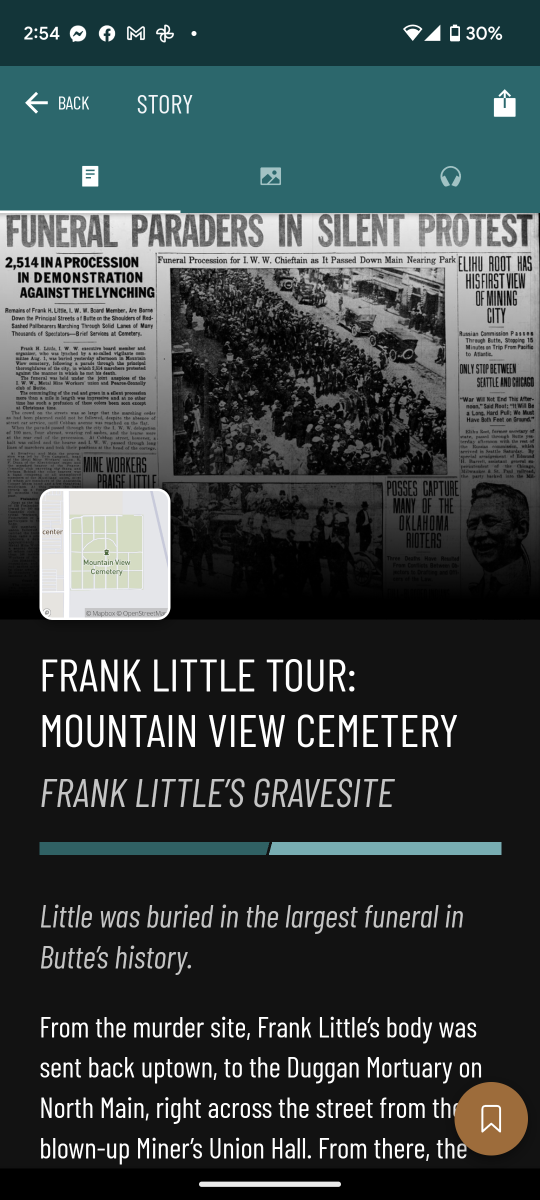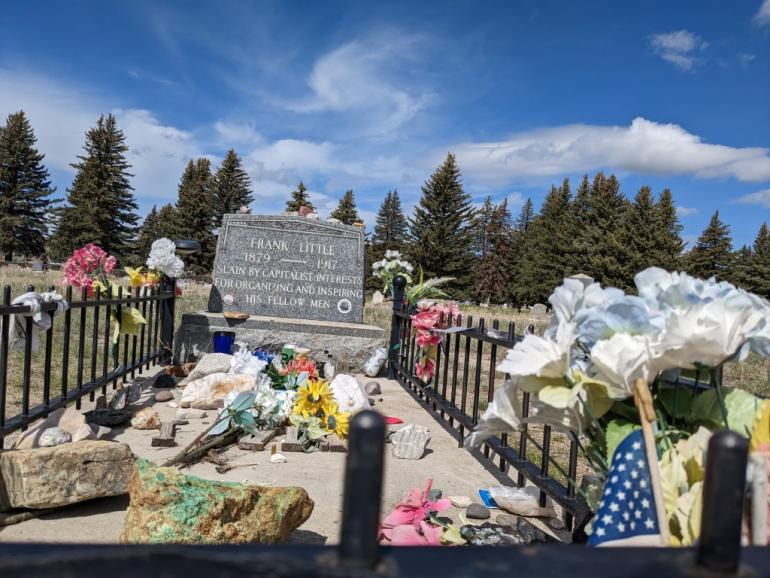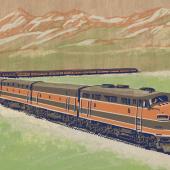Telling "The Story of Butte"

Butte, America boasts the largest historic district in the nation (and until otherwise proven, most probably the galaxy and maybe the universe, too). Hell, there's no more apt way to put it: Butte is positively lousy with history. You can't swing a miner's pickax at arm's length without hitting some history.
No sir, there's no shortage of history 'round here. The problem might just be the opposite: so much history that it's almost overwhelming. If you spend any time in uptown Butte, you can see it in the eyes of tourist passersby: awe tempered with bewilderment.
Even if you do know the broad outlines of Butte's history—copper kings, headframes, labor unrest—you still might find yourself gaga, looking at one of Butte's buildings and wondering how such a thing came to be. Why is that Catholic Church so stunningly art deco? Why is that television station housed (since 1957!) in a railroad depot? How did so much exceptional and well-preserved architecture arrange itself around a strangely beautiful but toxic hole in the ground?
And you know what I'd say to you? I'd advise you to thank Our Lady of the Rockies that you have "The Story of Butte" at your fingertips. Because of course, there is no one monolithic story of Butte. Instead, there's a tapestry of stories woven together.
Here's one of them.
You might already know something about the Great Fire of 1895, like how it killed 58 people and was not just a fire but a huge explosion that blew out windows all over the city. But you probably don't know the story of Officer Fred Kembeck, who came to the scene of the conflagration after the first explosion (dynamite illegally stored in a warehouse had caught fire). Once there, someone waved him down. They'd witnessed a low-life picking the pockets of one of the corpses. Kembrick decided to apprehend the ghoul. He seized the man and began transporting him back to the station when the second explosion occurred. This was the big one. A piece of flying debris, whistling like a red-hot missile out of hell, struck Officer Kembrick in the head. The poor man was instantly killed. History doesn't seem to record whether the sneak thief shared Kembrick's fate or whether he lived to loot again.
Okay, okay, here's another: in 1903, faced with the increasingly unavoidable issue of the city's population of "sporting women," Butte's city fathers performed the moral calculus and arrived at the same conclusion as did no less an expert than St. Augustine himself, who compared the "public woman" to what the "bilge is in a ship at sea," or what the "sewer pit is in a palace. Remove this sewer and the entire palace will be contaminated." The Anaconda Mining Company, it might be added, also shared this, ahem, enlightened viewpoint. Nevertheless, something had to be done; they were too brazen, too showy. The solution? Butte's soiled doves were hereby ordered to wear higher necklines and lower-hemmed skirts. Ever rebellious, they moved from the open streets to the alleys instead—and kept their decolletages on display.
Those are just two of thousands of Butte stories, and I happened to learn them while on a nice afternoon stroll thanks to the "Story of Butte."
There could be no more aptly named app.

Story of Butte is a project of the Butte-Silver Bow Public Archives and Butte Citizens for Preservation and Revitalization (Butte CPR), with some help from the Montana Historical Society, Humanities Montana, Butte Conventions and Visitors Bureau, and more.
One of its primary architects is Nancy Woodruff, a board member of Butte CPR who helped conceive of the project after seeing a similar historic app developed by a history professor friend of hers for Spokane, Washington. She saw it as a natural fit for Butte.
Primarily, she says, Story of Butte "promotes interest in Butte's amazing historic buildings. Story of Butte contains hundreds of articles about historic commercial, public, and residential buildings, thanks to content shared with us by the Montana Historical Society's National Register Sign Program. If you're standing in front of an interesting building in the historic district, chances are you can look it up on the Story of Butte app and read about the people and events associated with the structure, as well as view historic photographs. Or from your home you can virtually wander through the Butte historic district on the Story of Butte website."
 But there are certain ancillary benefits to the town as well, like beefing up Butte's "heritage tourism, a key part of Butte's tourism economy. Folks working in the tourism sector have been supportive from the beginning... At the visitor center the QR code for the app is taped to the door so that after hours visitors can still find information about Butte's historic district. And links to the app are prominently displayed on the home page of the Butte-Silver Bow local government website. We see these as signs that the community is finding Story of Butte useful and wants to share it."
But there are certain ancillary benefits to the town as well, like beefing up Butte's "heritage tourism, a key part of Butte's tourism economy. Folks working in the tourism sector have been supportive from the beginning... At the visitor center the QR code for the app is taped to the door so that after hours visitors can still find information about Butte's historic district. And links to the app are prominently displayed on the home page of the Butte-Silver Bow local government website. We see these as signs that the community is finding Story of Butte useful and wants to share it."
There are, at the time of this writing, 329 separate entries in the Story of Butte database, with more coming all the time. In addition to discrete entries, there are also many tours that organize locations into a series of stops that tell a fuller story, such as the 11 locations featured in the Murder of Frank Little tour.
That particular story, central to Butte's history, has proven to be particularly popular. Nancy Woodruff has an idea why: "It's an unsolved murder mystery, so it's a dramatic story, but it also has larger significance as part of the labor strife that was occurring in the country at the time. The author of that tour, Leif Fredrickson, is a historian and was part of a team that created the 'Death in the West' podcast series about Frank Little's murder, and he did a superb job of relating what happened in Butte to national and international events."

Aubrey Jaap, director of the Butte-Silver Bow Public Archives, is particularly excited about developing new tours so that more extraordinary slices of Butte's past can be featured.
"I hope Story of Butte will connect Butte locals and visitors to our history and a better appreciation for the events that took place in our community," she told me. "To walk by a building and read about the events that occurred there over the last century connects us to the importance of these physical places, which I'm excited about."
Her favorite so far is an upcoming tour.
"Soon we will be featuring a tour about the Women's Protective Union and some of the characters instrumental in the WPU. These women worked in restaurants, hotels, and cafes, but were critical in giving women better wages and rights in the workforce," she told me. "There are so many wonderful nuggets of Butte history that are not promoted enough and the Story of Butte is the perfect place to educate the public about our community."
Nancy Woodruff summarizes "Story of Butte's" value very concisely: it will serve "as a central place to display the stories, photos, memorabilia, oral histories, and audio clips that provide a window into the various aspects of the town's history. There is a wealth of information that has been published about Butte's history, and the town has excellent historical resources such as the Butte-Silver Bow Public Archives and the World Museum of Mining. Story of Butte provides a platform where these resources can be crafted into stories and made easily available to the public."
But don't trust us; find out for yourself!
Put on your boots, affix your headlamp, grab your pick and your lunchbox full of pasties. Don't forget your smartphone, too.
Open up the Story of Butte app and walk toward the nearest featured location. Read about it, view the pictures or listen to the oral history if applicable, and be fascinated. Then pick another interesting-looking building, and repeat. And repeat, and repeat, and repeat.
And if you happen to run into me out there doing the same, then let me know: what's your favorite "Story of Butte?"













- Reply
Permalink